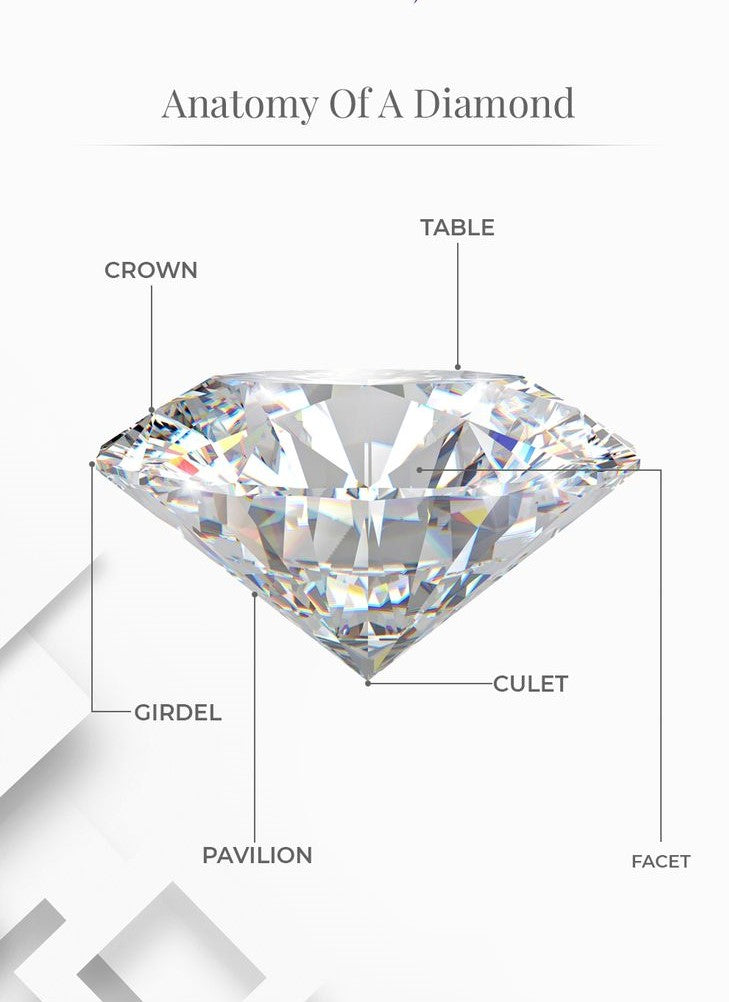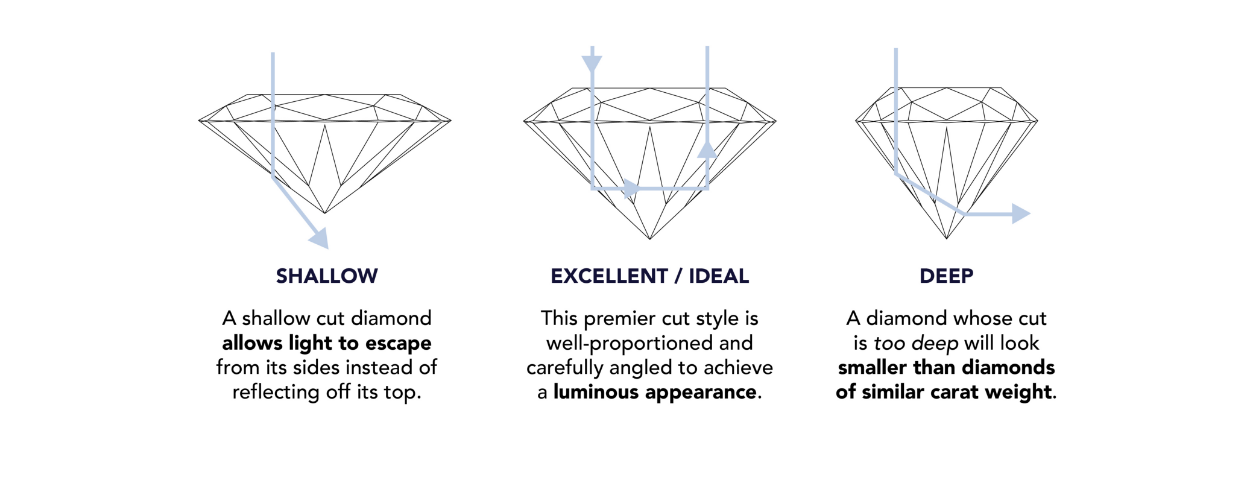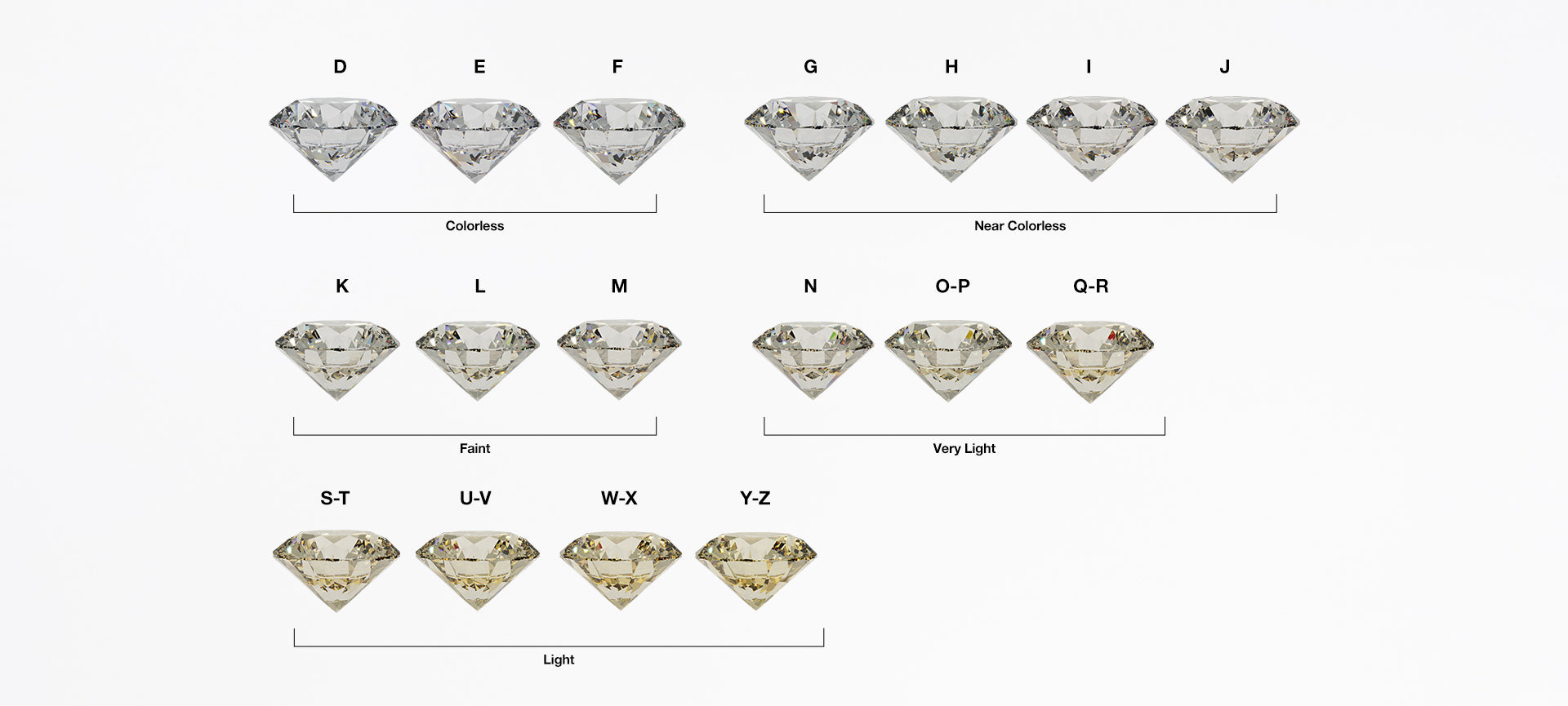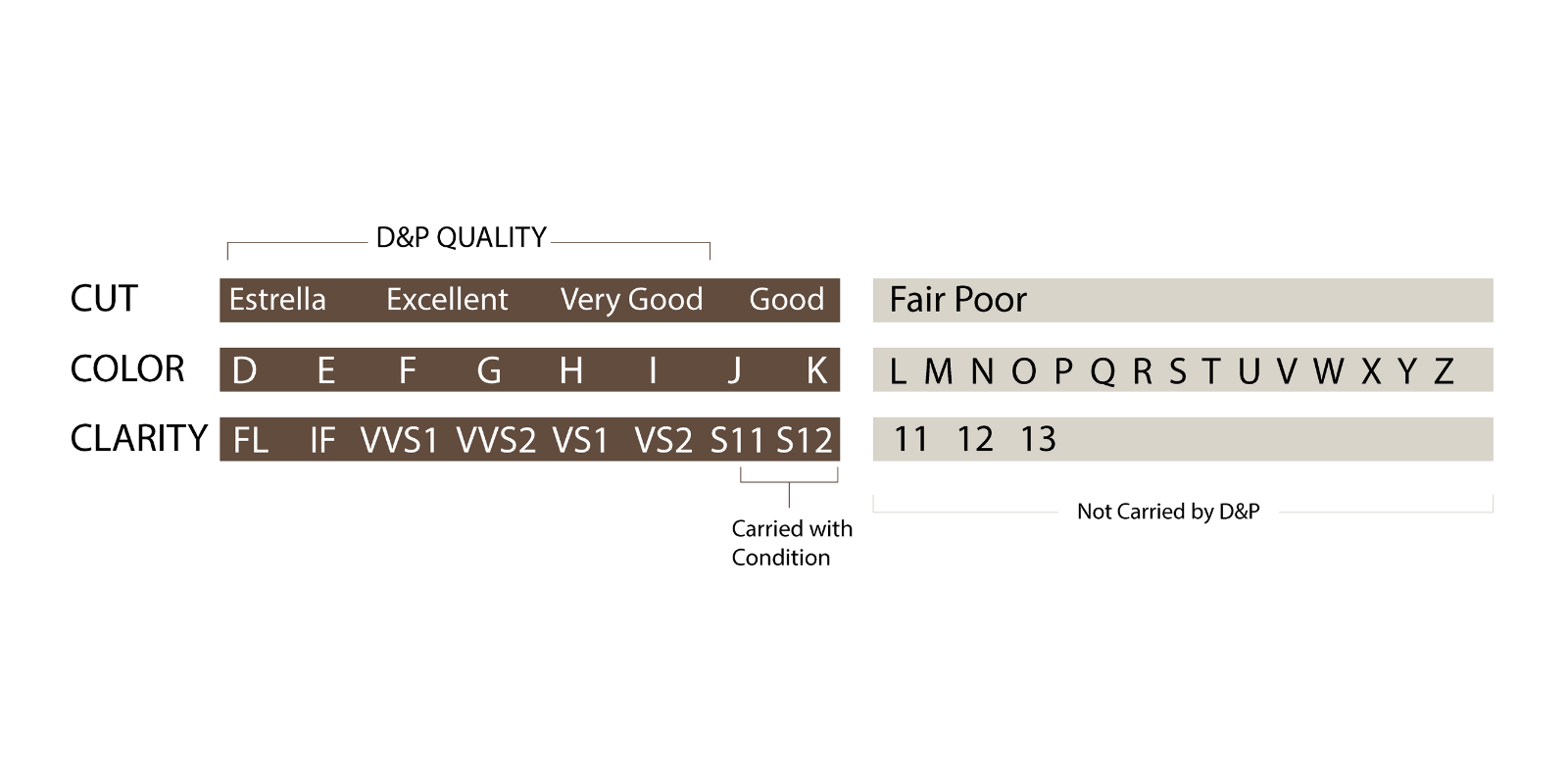4C's Diamonds
The 4Cs of a diamond—cut, color, clarity, and carat—work together to determine its overall beauty and worth. From the precision of its cut to the brilliance of its color, each aspect is meticulously graded to ensure that every diamond shines with exceptional brilliance and quality, making it a timeless symbol of elegance and sophistication.

Anatomy of
A diamond
The diamond's design and craftsmanship take into account its weight ratio (weight relative to diameter), girdle thickness (which influences durability), symmetry of facet arrangement, and polish quality on those facets.
Cut is frequently confused with diamond shape, however it actually relates to a stone's facet arrangement. Shape relates to the stone's outline. The most popular diamond form in jewelry is round, as seen in the basic round brilliant cut. All other diamond shapes are referred to as fancy shapes. Traditional fancy shapes include marquise, pear, oval, and octagonal (emerald cut). Square, cushion (square with softened sides), triangle, and many other
Cut
Among the 4Cs of diamond characteristics, cut is the most essential since it affects the overall beauty of a diamond and is the only property that can be sculpted by humans. A diamond's cut is not its shape; rather, it relates to the diamond's proportion, symmetrical facets, and polish as achieved by the diamond cutter. When a diamond is properly cut, its facets' capacity to reflect and refract light is substantially boosted, resulting in strong light performance (Brilliance, Fire, Sparkle, Light Symmetry).

Clarity
Clarity is the least important of the 4Cs since minor flaws are frequently too small to detect with the naked eye. Diamond clarity is defined as the lack of inclusions and imperfections. Surface imperfections are referred to as "blemishes," whereas inside problems are known as "inclusions." The placement of flaws and inclusions can disrupt the diamond's interaction with light. This reduces the diamond's shine and brightness.

Diamond does not hold diamonds in the 'Included' category. We recommend diamonds of clarity SI1 and above because imperfections and flaws are not visible to the naked eye. Inclusions and imperfections on diamonds with clarity SI1 or higher have little effect on the diamond's ability to reflect and refract light, causing it to sparkle. We occasionally propose diamonds with SI2 clarity, as long as the cut and colour are adequate to compensate for the low clarity.
Color
The second most crucial of the four Cs is color. Diamond color rating is based on the absence of color. GIA and IGI grade diamonds from D to Z, with D being the most colorless and Z having a notable brown or yellow tint. In most situations, the color differences between D and J diamonds are so minor that the naked and untrained eye cannot see them. However, color distinctions can create a significant difference in diamond quality and price.

Diamond exclusively has diamonds graded 'Colourless' (D-F) and 'Near Colourless' (G-J). We occasionally carry K color diamonds, provided that the cut and clarity are good enough to compensate for the poor color, delivering a good value for money diamond to our customers.
Carat
Diamond carat weight indicates how much a diamond weighs. If all other qualities of a diamond remain constant, diamond price rises with carat weight because larger diamonds are rarer and more coveted. However, two diamonds of same carat weight can have significantly different values and prices based on the diamond's other three attributes (4Cs): cut, color, and clarity.

The Diamond Quality
With over two decades of industry experience, we have honed our ability to select the optimum 4C combinations that will provide our customers with excellent quality and value. While unchosen diamond grades are typically substantially lower in price, they frequently lack the brilliance and sparkle that we want in diamonds. Over the years, our commitment on quality has earned the trust and confidence of many of our clients while also setting the benchmark for many of our industry peers.



